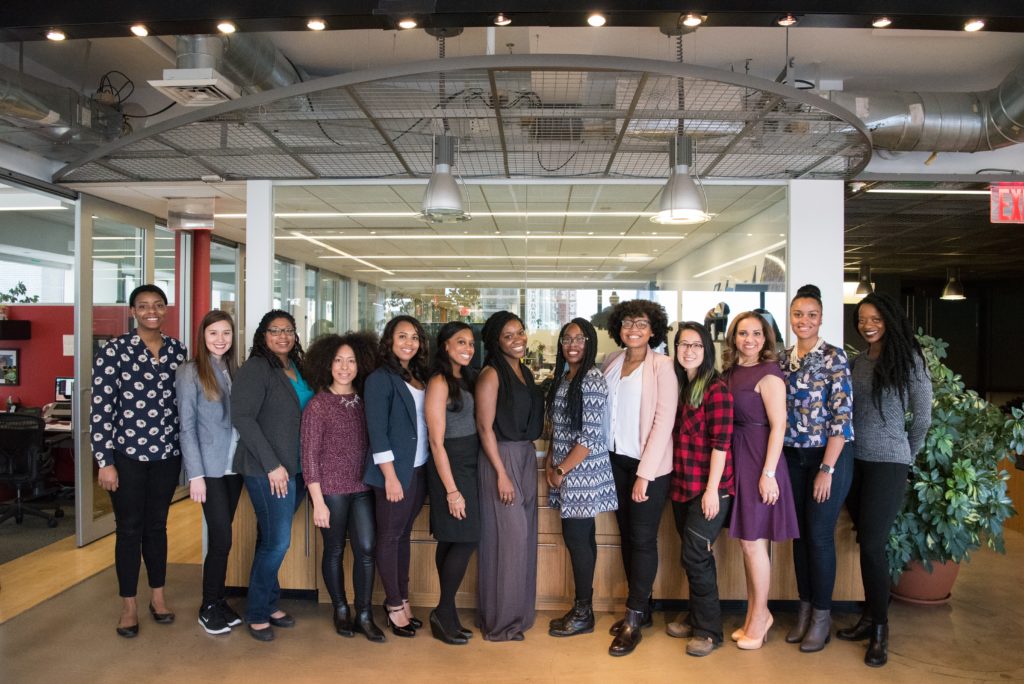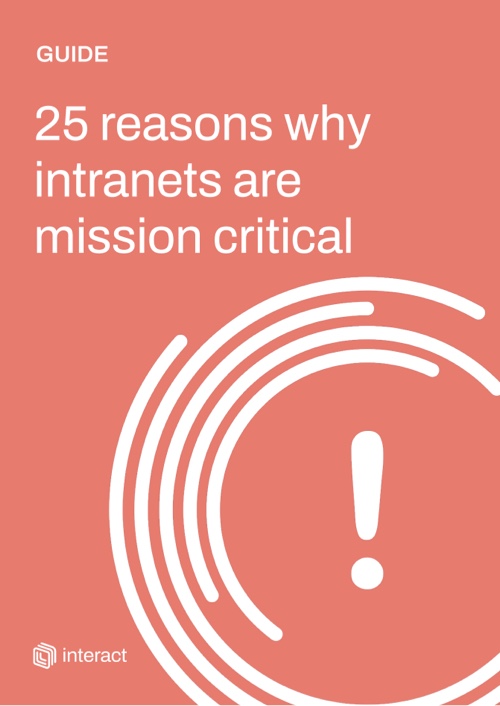How is your company addressing diversity and inclusion in 2020? With job seeker searches for the term “diversity” rising every month, could the software within your business support fairness, transparency, and equality in the workplace?
D&I is under the microscope. With the universal impact of the US police brutality and subsequent protests proving seismic, the global soul searching that has followed has seen many of us reassess our approaches to people, work, and society. When it comes to unconscious bias, are we all culpable in some way?
Inequality comes in many guises: race, gender, age, location, sexuality, creed. In our workforce, roles, and promotions, pay raises, and rewards should be given on individual merit, right? Not quite. What should be the case isn’t happening in many organizations. And with people focusing more and more on diversity and inclusion in the workplace, it will soon be a case that if you aren’t already honing your D&I policies now, your employees will inevitably vote with their feet.
23 ways your workplace can use a mission-critical intranet to achieve its objectives
To truly make a difference, change like this should begin at a granular level: in schools, at home, and in our workplaces. The ongoing discussions, reflections, and protests sparked in the first half of 2020 should act as a reminder to us as business leaders to look at our own organizations and see how we measure up. Are we practicing balance and equality in our recruitment and development of people – or are we letting our employees, and the wider community, down?
The leader/employee perception gap

The answer to this depends on whom you ask. You may think your organization is diverse, but your employees think very differently. Two-thirds of leaders (68 percent) feel they create empowering environments—in which employees can be themselves, raise concerns, and innovate without fear of failure—but just one third (36 percent) of employees agree. (Source: Accenture). But is this so?
Let’s look at a few stats…
- Of the CEOs of Fortune 500 companies, only 2.8% are women.
- In Palo Alto, the epicenter of Silicon Valley, Black Americans make up just 1.6% of the population.
- 89 percent of CEOs and 79 percent of executives, leaders, and managers in the US workforce are white.
And it’s not just the US. Workplaces everywhere need to address their diversity and inclusion and make immediate changes.
Why is a diverse and inclusive workplace so important?

It goes without saying that welcoming diversity into the workplace is a must-have. In the 21st century, it is not only a corporate benefit; it is an ethical and moral priority.
You may think your organization is diverse, but your employees think very differently.
An estimated £24 billion a year could be added to GDP in the UK were workplaces to ensure full representation of BAME individuals across the labor market. Women’s equality across the world could add $12 trillion to global growth. Businesses need to tap into this wealth of talent and create an equal workplace for everyone. But these benefits aren’t speculative. There are many real-life examples of organizations creating fair workplaces and reaping the benefits.
Innovation – Diversity can bring fresh ideas to the workplace. The Harvard Business Review recently published research showing that, “… people like to fit in, so they are cautious about sticking their necks out. When we have a strong, homogeneous culture, we stifle the natural cognitive diversity in groups through the pressure to conform.” According to research from Deloitte, organizations with inclusive cultures were six times more likely to be innovative and agile.
An intranet goes hand in hand with those parts of the business whose responsibility it is to push diversity: Internal Comms and HR.
Performance – The Deloitte report saw these types of companies were twice as likely to meet or exceed the financial target, and eight times more likely to achieve better business outcomes. Employee satisfaction and positive attitudes increase in diverse workplaces, with better decisions made in this diverse group of people. These aspects generally create the foundation for better performances across teams.
Growth – With increases in innovation and performance, it’s no surprise that a diverse and inclusive workforce sees faster and higher growth. Research in 2013 by the New York-based Center for Talent Innovation found that publicly traded companies with greater diversity were 45% more likely than those without to have expanded market share in the past year and 70% more likely to have captured a new market. Source
And people are actively looking for a diverse and inclusive workplace. Jobseeker searches for the term “diversity” rose about 222% year-over-year, according to July data from employment marketplace provider ZipRecruiter. According to Staffbase, most Americans are looking to work for a diverse modern workplace, with three-quarters of those polled stating that it’s very (49 percent) or somewhat (26 percent) important for companies and organizations to promote racial and ethnic diversity in their workplace.
It’s time to look at your own organization and what measures are being taken to build an inclusive and diverse culture from within.
How can an intranet help with diversity and inclusion?

Implementing software may sound incongruous to the promotion of D&I. Yet, an intranet goes hand in hand with those parts of the business whose responsibility it is to push diversity: Internal Comms and HR. Through comms and policies, a company intranet can be integral in building the workplace culture. It is an essential tool for any business looking to create a more inclusive organization.
According to recent data, jobseeker searches for the term “diversity” rose about 222% year-on-year
And business leaders need to look ahead to how the workplace is changing in order to create a culture that fits and responds to new ways of working. A modern organization is no longer exclusive to a brick-and-mortar office. Today’s ‘office’ can take place remotely, at home, and even overseas. The approach to D&I should fit this dispersed workforce. Your intranet is the system that connects everyone together, supporting communication, collaboration, and a sense of culture, regardless of where the employee is.
23 ways your workplace can use a mission-critical intranet to achieve its objectives
As an internal comms tool, you have a multi-faceted platform that can support you in a number of ways – from broadcasting data to providing translation tools for a multi-lingual business. Here are just some of the ways that intranet software can work in building a diverse workplace culture that embraces differences and promotes inclusion:
#1 Translation services

You can overcome language barriers with intranet translation tools. Implementing intranet translation tools not only allows your colleagues to interpret what peers are saying but also provides a deeper and more sophisticated understanding of societal behaviors, cultural norms, idioms, and fully understand other cultures.
Interact software has an advanced language pack consisting of everything from Afrikaans to Welsh. Aiding understanding and communication and removing any language barriers is key to creating a truly diverse workplace.
#2 Video comms

When it comes to delivering comms, video makes light work of providing a complicated concept in the most comprehensive way. A two-minute video could condense the most complex message into a piece of information digestible for the entire workforce.
International Rescue Committee is a prime example of how video can serve a diverse workforce. With 11,000+ strong workforce who speak over twenty languages, the content team was tasked with creating videos that need to reach all employees, with subtitles provided to translate English into French and Arabic.
#3 Leadership visibility

Leaders give an organization direction. They are crucial to keeping staff in the loop about where the business is headed and how staff contribute to that vision. It is this aspect of their role that makes them so critical in promoting diversity and inclusion. Deloitte’s research shows the behavior of leaders, whether they are managers or senior executives, is very influential. It can drive up the difference between the proportion of employees who feel highly included and the proportion of those who do not by seventy percent. This effect is even more substantial for minority group members.
An intranet helps provide a platform for leaders which they can use to share their message across the board. Employees should feel free to ask questions and find out more about their organization’s D&I policy. Leaders should, in turn, be prepared to answer these queries, promote conversations, and ask questions themselves. They should encourage a culture that is always asking, always striving, and always working out ways to be better.
#4 Transparency

To promote diversity and inclusion, your organization may need to take a chance on doing things they have never done before. Traditional businesses usually shy away from the publication of D&I data. However, sharing equal pay and workforce demographics is not only illuminating for your employees, but it also presents your organization as an institution that is unafraid of transparency.
The US firm, J. Thelander Consulting, has taken the step to make its data as transparent as possible. Its platform, Complander, lists information about all staff-level positions from employees across 5,000 private companies and investment firms across the world. This information includes base salaries, bonuses, and stock offerings. This transparency is designed to arm employees with the right information from the beginning – leveling the playing field for everyone.
#5 Communication

To avoid misinterpretation or wrong footedness, organizations tend to avoid conversations on race, gender, sexual orientation, etc. But equality is a huge issue that needs to be aired – we need to get comfortable having uncomfortable conversations. Employees should feel free to discuss this with colleagues and leaders alike. Luckily, an intranet facilitates communication in a number of ways. The system promotes two-way dialogue, meaning that if you want to speak up – as an individual, or a group – you have the platform to do it, and your employers can respond accordingly.
This all contributes to an open workplace culture, where everyone is free to raise topics or uncomfortable subjects. These conversations can be out-in-the-open forum discussions, anonymous questions sent during an all-hands meeting, or even a pulse survey that allows the employee to raise concerns or queries incognito.
#6 Inclusive language and imagery

While this may seem too subtle to make a difference, a policy on inclusive language underlines that your organization is serious about its goal. The choice of words has a significant impact on our sense of belonging in the workplace. Referring to women as ‘girls’, groups of people as ‘guys’, and pictures of all-white staff have very subtle – and not so subtle – implications. Your intranet is the basis for this type of initiative – where you can explain what inclusive language is, why it should be used, and why your organization favors certain terms over traditional names.
Representation is so important, and attention should be paid to the details. Even with stock images, the question should be asked: “Does this image truly represent the organization we aspire to be?”. Much better is to use images of your actual employees if you want your digital channels to reflect real life. Your intranet can go a long way in supporting this policy, the effects of which will gradually influence the organization.
#7 ERGs

Otherwise known as employee resource groups, these are the groups that have an affinity or goal in common. Often grouped by a demographic, an ERG acts a voice on a particular issue, and professionally supports members and work in partnership with the employer.
Examples of an ERG include LGBTQ+ networks, women in business groups, ex-military clubs, or black employee societies. An intranet can support these groups by providing an area dedicated to each group. It is here that team members can discuss issues that impact them, organize get-togethers, or initiate in-office campaigns and welcome new members on board. These groups are critical to HR to provide feedback on what is and isn’t working, regarding any D&I initiatives currently in motion.
#8 Development programs

While it is essential to push the D&I policies of your particular organization when recruiting externally, it’s also important to review your internal recruitment procedures. Developing your employees from within has many benefits, and candidates will be excited about long term career development. It sends out the message that anybody can gain promotion from within, regardless of background or circumstances.
The intranet has been used to enormous success in the training and development within organizations. Global tourism specialist, Magic Memories, is an example of how the creation of a worldwide learn leadership program was built and maintained on the intranet. With a focus on internal recruitment, stats have shown that companies that use e-learning technology receive an 18% boost in employee engagement, and Magic Memories is an example of e-learning done right.
Progress is being made, but it is slow and inconsistent. Of all the different aspects of a business, it is HR who can control the speed in which organizations embrace more diversity and inclusion in their workforce. They are also influential in identifying and acting upon any discrimination that might happen above or below the surface. Workplace prejudice is a complex problem. While using software like an intranet won’t solve the issue, it can enable a business to move forward with their agenda, and support employees to drive change from within.
And for organizations wanting to act on their approach to D&I, it’s best to act now. With more and more workers looking for organizations that are actively practicing diversity, it is a social, cultural, and financial prerogative – and something that will soon see you left behind if you ignore it.



